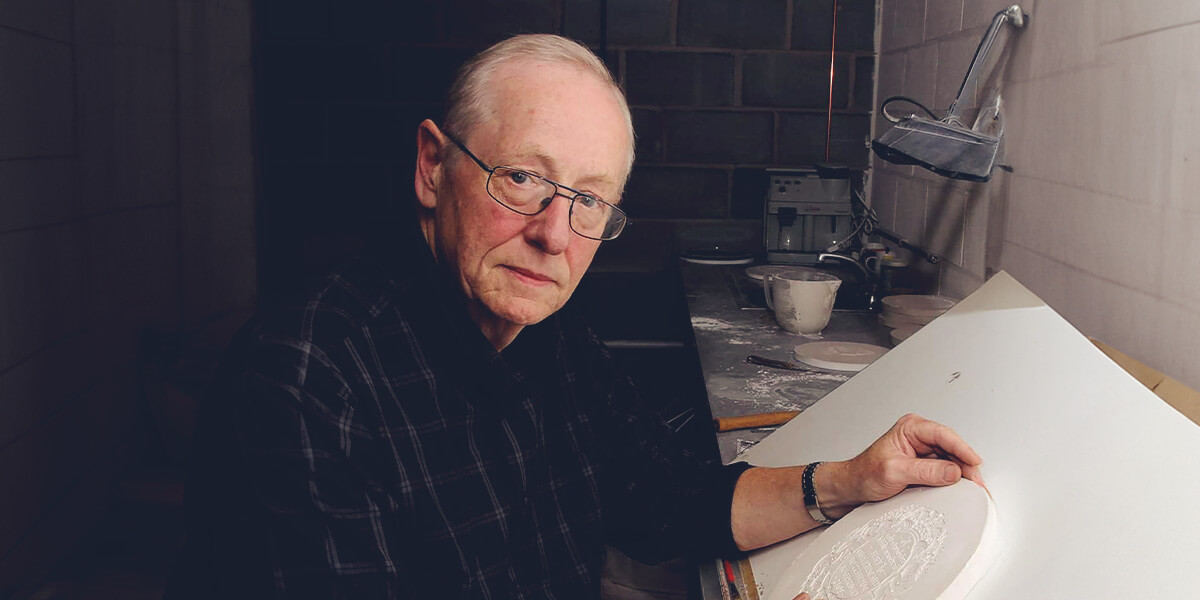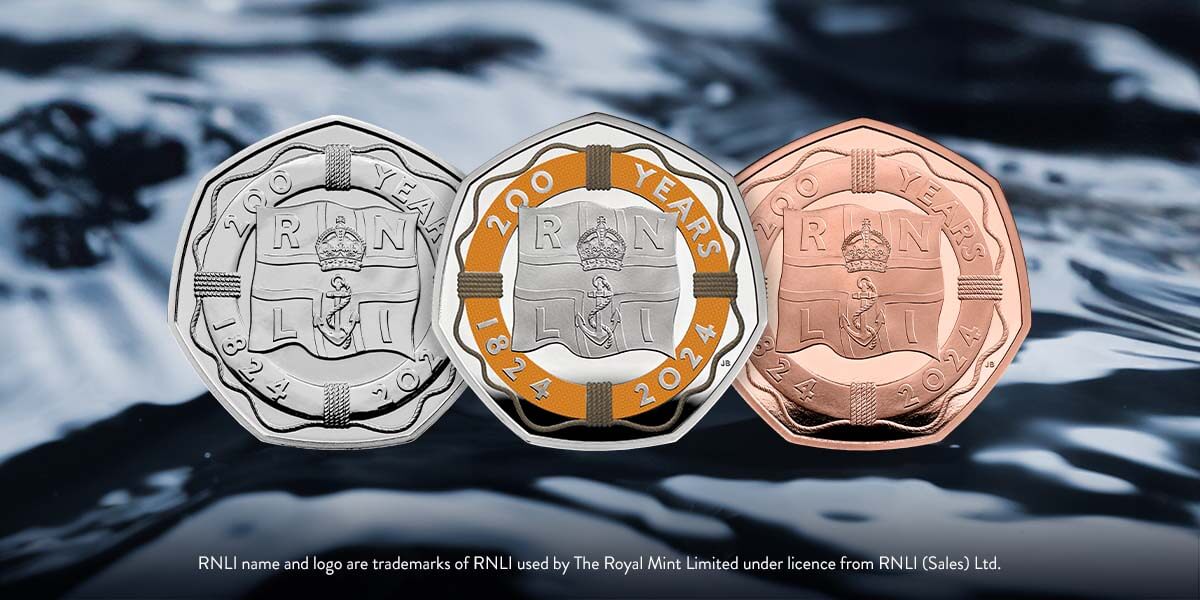For 200 years, the Royal National Lifeboat Institution (RNLI) has been saving lives. With the support of its brave volunteers and generous donors, the charity has worked through wars, difficult weather and pandemics, saving more than 144,000 lives since its inception.
In honour of the 200th anniversary of the RNLI, we are releasing a UK commemorative coin that is available as gold Proof editions, a silver Proof Piedfort and silver Proof edition that both feature colour printing and a Brilliant Uncirculated edition that is available with or without colour printing.

Designed by experienced coinage artist John Bergdahl, the reverse of the coin commemorates the RNLI’s lifesaving work. The artist’s other coin designs include those created for several UK coins and medals, including designs commemorating the coronation of His Majesty King Charles III, Her Late Majesty Queen Elizabeth II’s Platinum Jubilee and the centenary of Flying Scotsman.
We sat down with the artist to find out more about his creative process and the inspiration behind his design for the coin commemorating the 200th anniversary of the RNLI.
After receiving the submission invite, what were you most looking forward to about this project?
“The RNLI is a subject close to my heart, so I looked forward to producing a design that would help celebrate its bicentenary.”
How did it feel when you found out that your design had been chosen to feature on the coin?
“I felt a degree of pride when my design was chosen to go to the next stage of development.”
Do you have any personal connections to the subject matter?
“I was born and raised in a dockland location, and I have always had a connection to the sea and as a keen angler have spent many hours on the water. Fortunately, I have never had to avail myself of its services but nonetheless have always been acutely aware of its presence if needed.”

How did you approach the initial design concept?
“I approached the subject in my usual manner by formulating images in my mind’s eye to the point where I was pretty much ready to commit the virtually complete design directly to paper.”
Did you undertake any research for the theme?
“Once I had a good idea as to what I wanted to convey, I of course spent a couple of days studying hundreds of images on my computer to ensure that all the details were correct.”
Could you talk us through any iterations that led you to the final design?
“I initially contemplated a number of design possibilities; I resorted to my usual method of sketching out the image on tracing paper, and then rearranging the various component parts by repeatedly overlaying the images before committing the final design to paper.”
Where did you study and what was your journey to becoming a designer?
“I had very little by way of formal education; my family’s financial situation meant I had little alternative other than to start work at 15 years old. What little knowledge I have was picked up along the way, mainly by watching over other people’s shoulders.”
Thank You, RNLI
Over the past 200 years, the RNLI has survived thanks to donations. In honour of the institution’s great work, a percentage of the price of each coin will be donated in support of the charity.
Be inspired

RNLI name and logo are trademarks of RNLI used by The Royal Mint Limited under licence from RNLI (Sales) Ltd.


